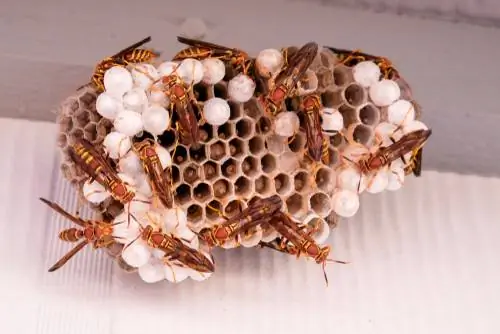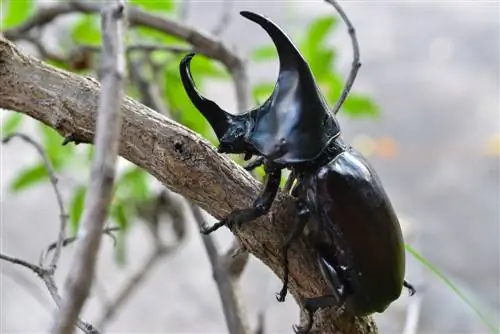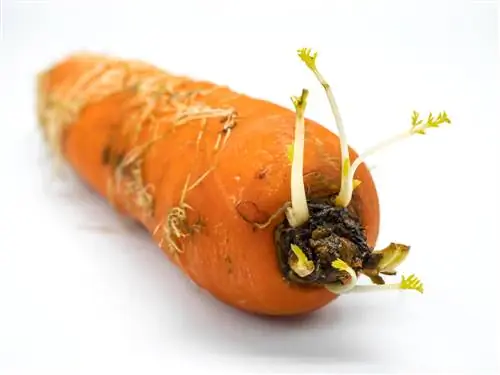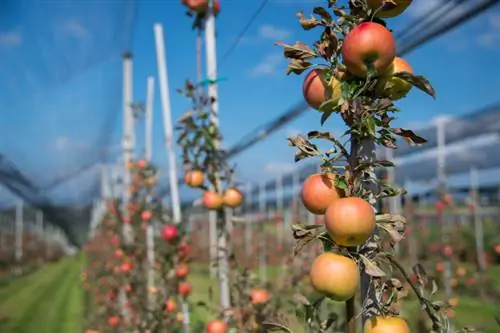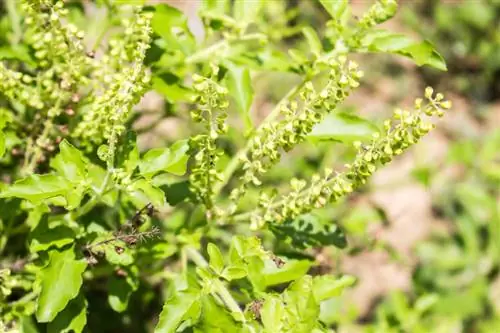- Author admin [email protected].
- Public 2023-12-16 16:46.
- Last modified 2025-01-23 11:22.
If you have a wasp nest in your garden, you can rightly fear an invasion of striped stinging insects at some point - namely when the larvae hatch from their pupae. In order to be prepared for this, some background knowledge is a good idea.
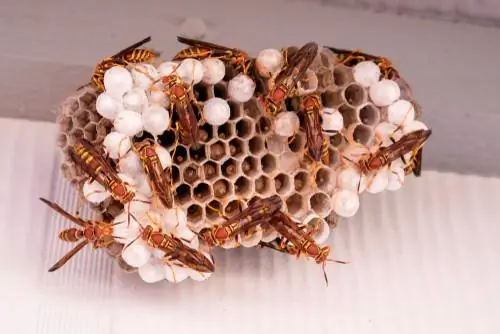
When do wasps emerge from their pupa?
Wasps hatch from their eggs after about 5 days and then go through a larval stage of about 9 days. They then pupate for 12 to 20 days, depending on the nest temperature. After this time they emerge as adult wasps.
The wasp nursery
In this article we are primarily concerned with the emergence of the wasp larvae from the pupation - because that is when the major wasp invasion takes place. Actually, wasps hatch twice in their lifetime.
From egg to larva
Wasps finally hatch from the egg for the first time. In spring, the young wasp queen lays the foundation for the wasp nest, for which she looks for a suitable, cave-like shelter. This can be an abandoned mouse or mole burrow, a pile of stones, a roof structure or a hollow tree stump. She lays her eggs in the first brood cells created. It takes about 5 days for the wasp larvae to hatch.
To remember:
- Wasp first hatches from the egg, then from the pupation
- Time in the egg lasts about 5 days
The development stages of the larvae
Once they have hatched, the wasps enter the larval stage. This is strictly separated from the adult stage - both in terms of lifestyle and time. Because pupation lies between the two stages.
How long the time as a larva lasts is not set in stone. The duration depends on the conditions under which the larva can develop. This includes, on the one hand, the food supply. The more protein-containing insects there are around the workers, the faster and stronger the larvae can grow. The nest temperature also affects the length of the larval period. On average you can expect around 9 days.
During the larval stage, the wasp larvae grow and molt several times, more precisely five times. They strip off the old skin backwards. During the entire larval period they stick to the honeycomb cell with their own secretion.
When they have completed all the molting stages and have grown well, the larvae pupate in order to develop into a wasp capable of flying. To do this, they spin a solid chrysalis around their body using special spinnerets on their heads. How long the metamorphosis in pupation lasts depends on the temperature in the nest. In warm conditions, the larva can mature into a wasp after just 12 days. If it's cooler, it takes up to 20 days. By the way, the wings only develop in the last 2 to 3 days.
To remember:
- After time in the egg: approx. 9 days larval stage
- Then 12 to 20 days pupal stage
In order to be able to estimate the time when a new colony of wasps will emerge from the nest, it is of course necessary to identify the shelter beforehand. This is not so easy, because a generation of wasps only lasts for one summer. An old wasp nest is usually not reused the following year. However, in spring you can of course examine possible shelters, such as roller shutter boxes or mouse burrows, for wasp honeycombs and any eggs and larvae.

